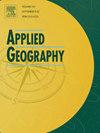2019冠状病毒病大流行对泰国东部热带作物种植的持久影响
IF 5.4
2区 地球科学
Q1 GEOGRAPHY
引用次数: 0
摘要
全球2019冠状病毒病大流行扰乱了供应链,改变了市场动态,重塑了全球农业社区的劳动力供应。今天,我们可以开始看到这些破坏的一些持久后果以及农民对此的反应。本文报告了通过深入访谈和泰国东部农场访问确定的农民适应大流行破坏的持久后果。研究小组于2024年6月至7月完成了对52名农民的结构化访谈和对主要利益相关者的10次半结构化访谈。农民表示使用更多的重型机械(疫情前的33%增加到疫情后的44%),并采用电子商务等新的分销渠道(疫情前的33%增加到疫情后的54%)。定性访谈揭示了进一步的转变,包括参加合作社以降低成本和实现利润最大化,更多地关注健康和卫生习惯,以及出于自给自足的考虑而追求作物多样化。其中许多变化在大流行后继续存在,对与使用重型机械、改变投入和作物类型多样化有关的环境系统产生持久影响;通过改变消费者和生产者之间以及农民之间的关系来建立社会制度;并在经济体系中拓展在线市场和增值商品。这些发现对农业政策和弹性规划具有重要意义,为其他具有类似农业系统的地区提供信息,并有助于理解农业弹性、可持续粮食系统和面对全球挑战的适应能力。本文章由计算机程序翻译,如有差异,请以英文原文为准。
The COVID-19 Pandemic's lasting consequences for tropical crop cultivation in Eastern Thailand
The global COVID-19 pandemic disrupted supply chains, altered market dynamics, and reshaped labor availability in agricultural communities worldwide. Today, we can begin to see some of the lasting consequences of these disruptions and farmer responses to them. This article reports on the lasting consequences of farmer adaptations to pandemic disruptions identified via in-depth interviews and farm visits in Eastern Thailand. The research team completed structured interviews with 52 farmers and 10 semi-structured interviews with key stakeholders in June–July 2024. Farmers indicated using more heavy machinery (33 % before the pandemic grew to 44 % of farmers after the pandemic) and adopting new distribution channels like e-commerce (33 % before the pandemic grew to 54 % of farmers after the pandemic). Qualitative interviews revealed further shifts including participating in cooperatives to reduce costs and maximize profits, attending more to health and hygiene practices, and pursuing crop diversification due to self-sufficiency concerns. Many of these shifts continue to be in place post-pandemic in ways that produce lasting consequences for environmental systems associated with utilizing heavy machinery, changing inputs, and diversifying crop types; social systems by shifting relations between consumers and producers and between farmers; and economic systems in the expansion of online markets and value-added goods. These findings have important implications for agricultural policy and resiliency planning, informing other regions with similar agricultural systems, and contributing to understanding of agricultural resilience, sustainable food systems, and adaptation in the face of global challenges.
求助全文
通过发布文献求助,成功后即可免费获取论文全文。
去求助
来源期刊

Applied Geography
GEOGRAPHY-
CiteScore
8.00
自引率
2.00%
发文量
134
期刊介绍:
Applied Geography is a journal devoted to the publication of research which utilizes geographic approaches (human, physical, nature-society and GIScience) to resolve human problems that have a spatial dimension. These problems may be related to the assessment, management and allocation of the world physical and/or human resources. The underlying rationale of the journal is that only through a clear understanding of the relevant societal, physical, and coupled natural-humans systems can we resolve such problems. Papers are invited on any theme involving the application of geographical theory and methodology in the resolution of human problems.
 求助内容:
求助内容: 应助结果提醒方式:
应助结果提醒方式:


